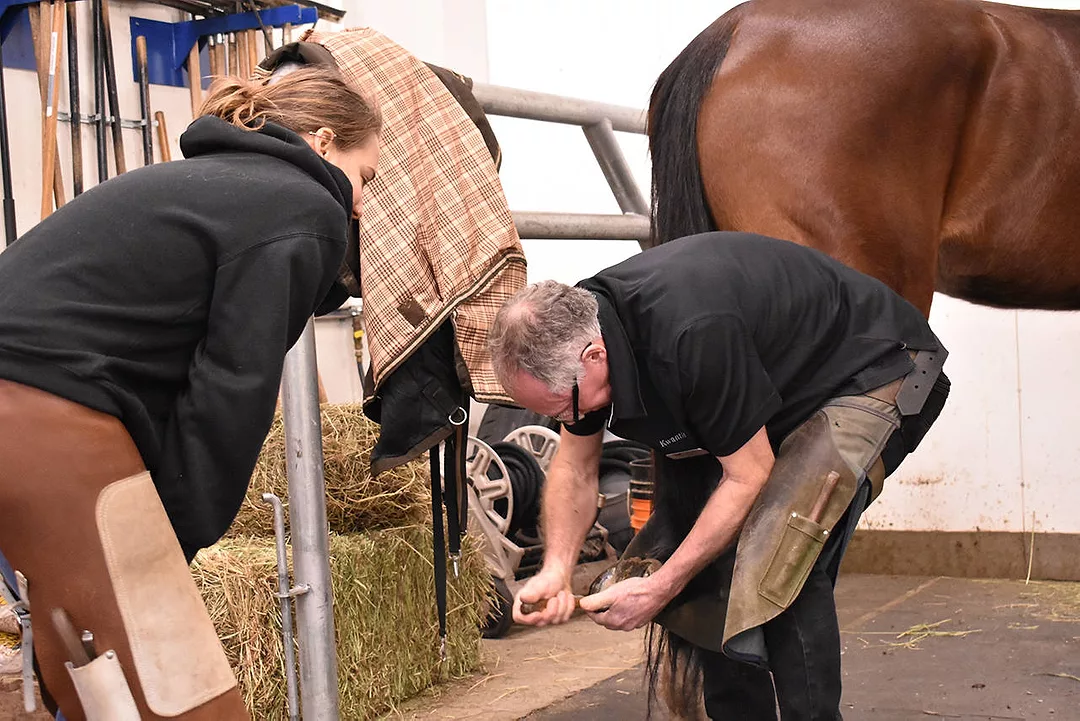Pictured Above: Instructor Gerard Laverty demonstrates hoof trimming. Photo: Surrey Now-Leader
Kwantlen Polytechnic University (KPU) has taught farriery since the school’s inception in 1981. The Surrey Now-Leader got an inside look at what students are learning now.
Farrier instructor Gerard Laverty told the Surrey Now-Leader that the practice he teaches has not changed much since he was an apprentice. “It’s one of those trades that has been affected very little by technology, and that kind of worries me a bit,” he says. He wonders if that means sudden change is on the horizon.
“Maybe it’ll be 3D printers,” he says. For now, Laverty teaches skills that students would have needed to know 100 years ago.
Students study equine physiology, anatomy, diseases and therapeutic farriery in class and practice horsemanship, technical skills and good communication.
“As much as possible, we’ll shoe these horses as if they were client horses out in the field,” Laverty says. “It’s real-world learning for the students.”
The motivation to become a farrier has not changed over the years either — students pursue it for the love of horses.
“I just really like working with horses, and there’s so much to know and so much to learn,” says student Rowan Treulieb. “This is a great way — you’re working with horses every day, it’s kind of like your career to learn how to be better with horses. You never hit the end where you’re the best of the best.”
Treulieb and KPU’s program exemplify one of the few ways the profession has changed over the years: the amount of female farriers is increasing. According to Laverty, KPU educates more female farriers than any other program in North America.
“Probably more female farriers train here than at all the other schools combined,” Laverty says. “Part of it has to do with the horse industry here, there are a lot of women involved with horses and a lot of women shoeing horses.”







